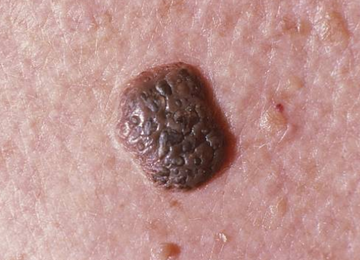
Seborrheic Keratosis Removal
We also specialise in laser tattoo removal, anti-wrinkle and acne treatment, stretch mark removal and more. Book your free consultation online or call us directly on 07 3092 1378.
Frequently asked questions
The exact cause of seborrheic keratosis is unknown, but it is thought to be related to age, genetics, and sun exposure. These growths tend to be more common in older individuals, and there may be a genetic component to their development. Additionally, exposure to ultraviolet (UV) radiation from the sun or tanning beds may increase the risk of developing seborrheic keratosis.
Seborrheic keratosis typically presents as a raised, waxy, and scaly growth on the skin, ranging in color from tan to brown to black. The growth may be small or large, and may have a smooth or rough surface. In some cases, the growth may itch or become irritated.
Seborrheic keratosis is typically diagnosed based on its appearance. A dermatologist or other healthcare provider may perform a physical exam and evaluate the growth to determine if it is seborrheic keratosis or another skin condition. In some cases, a biopsy may be performed to confirm the diagnosis.
Seborrheic keratosis growths are generally benign and do not pose a threat to health. However, it is important to have any unusual growths or changes in the skin evaluated by a healthcare provider to rule out more serious skin conditions, such as melanoma.
There is no known way to prevent seborrheic keratosis, as the exact cause is unknown. However, protecting the skin from sun exposure may help reduce the risk of developing these growths.
Seborrheic keratosis may be treated for cosmetic reasons or if they are causing discomfort or irritation. Treatment options include:
- Cryotherapy: freezing the growth with liquid nitrogen.
- Curettage and desiccation: scraping off the growth and using heat to stop bleeding and kill remaining cells.
- Electrosurgery: burning off the growth with an electric current.
- Laser therapy: using a laser to remove the growth. This is the preferred method at our clinic.
- Topical treatments: using creams or ointments to help reduce the appearance of the growth.
No, seborrheic keratosis is not contagious and cannot be spread from person to person.
Seborrheic keratosis growths are generally benign and do not turn into skin cancer. However, it is important to have any unusual growths or changes in the skin evaluated by a healthcare provider to rule out more serious skin conditions, such as melanoma.
It is not recommended to attempt to remove seborrheic keratosis at home. Home remedies or treatments can potentially cause harm or damage to the skin, and may not be effective in completely removing the growth. It is important to have any unusual growths or changes in the skin evaluated by a healthcare provider to determine the best course of treatment. Speak to our cosmetic team who can can safely and effectively remove seborrheic keratosis growths using appropriate medical treatments.

